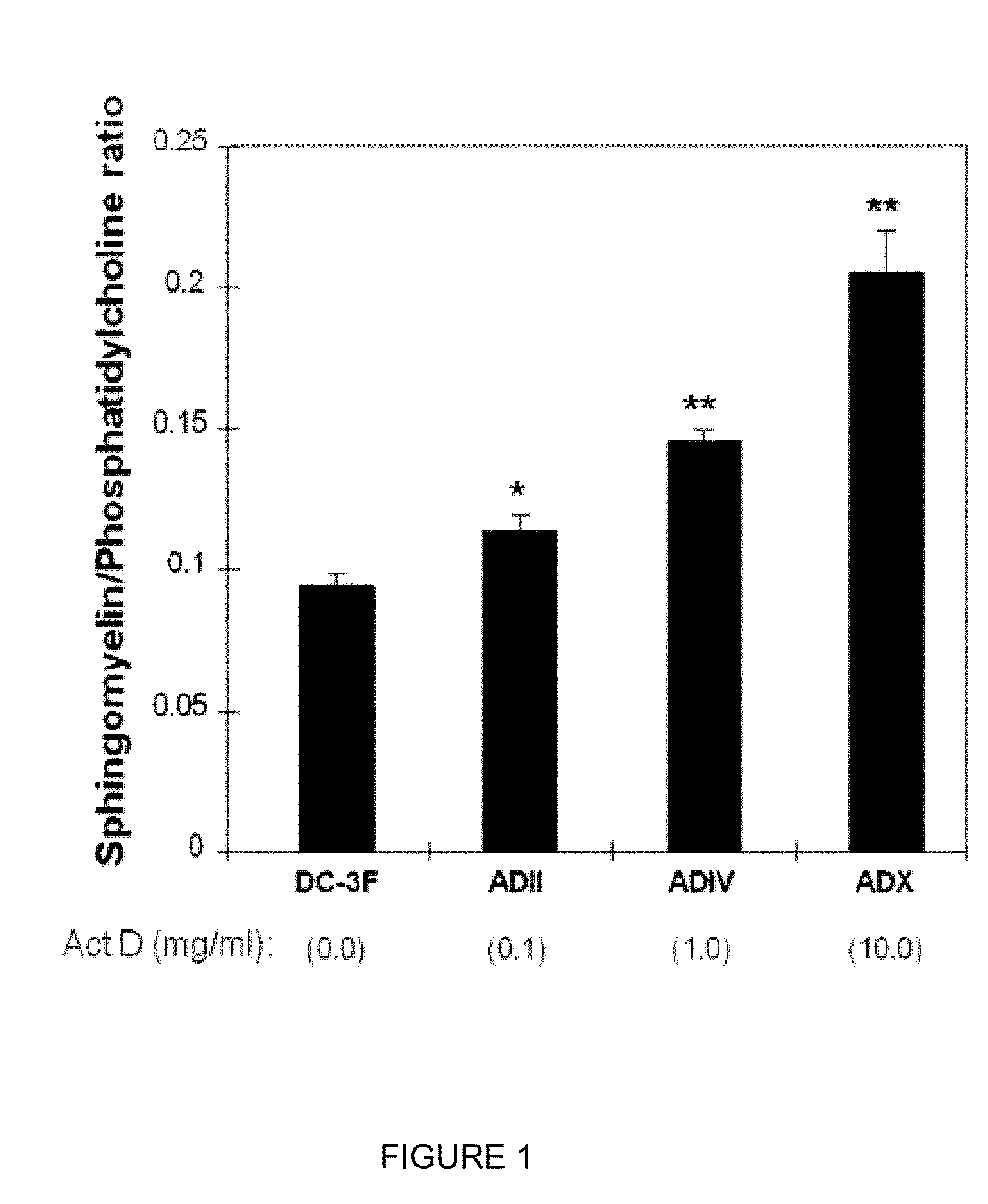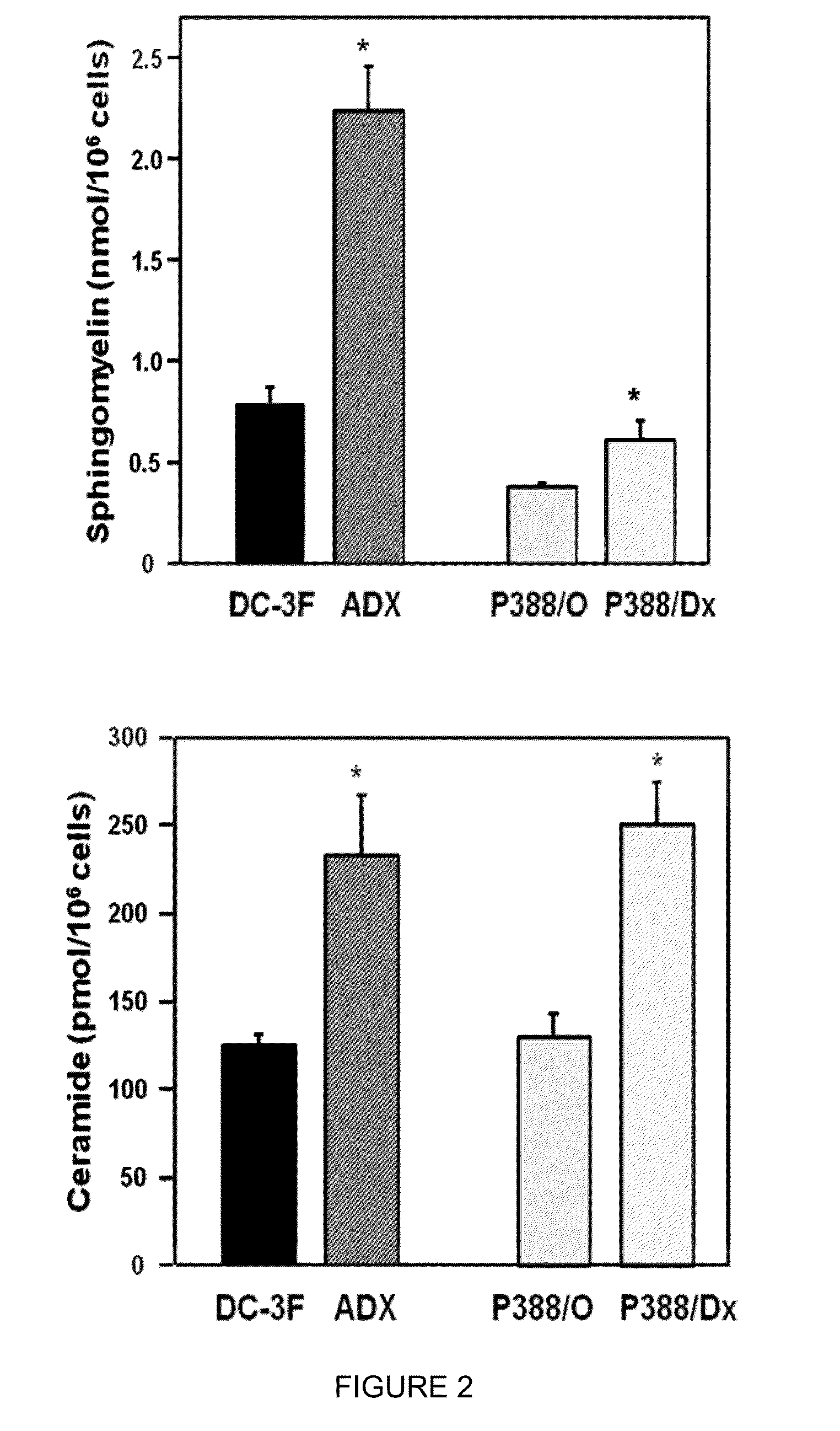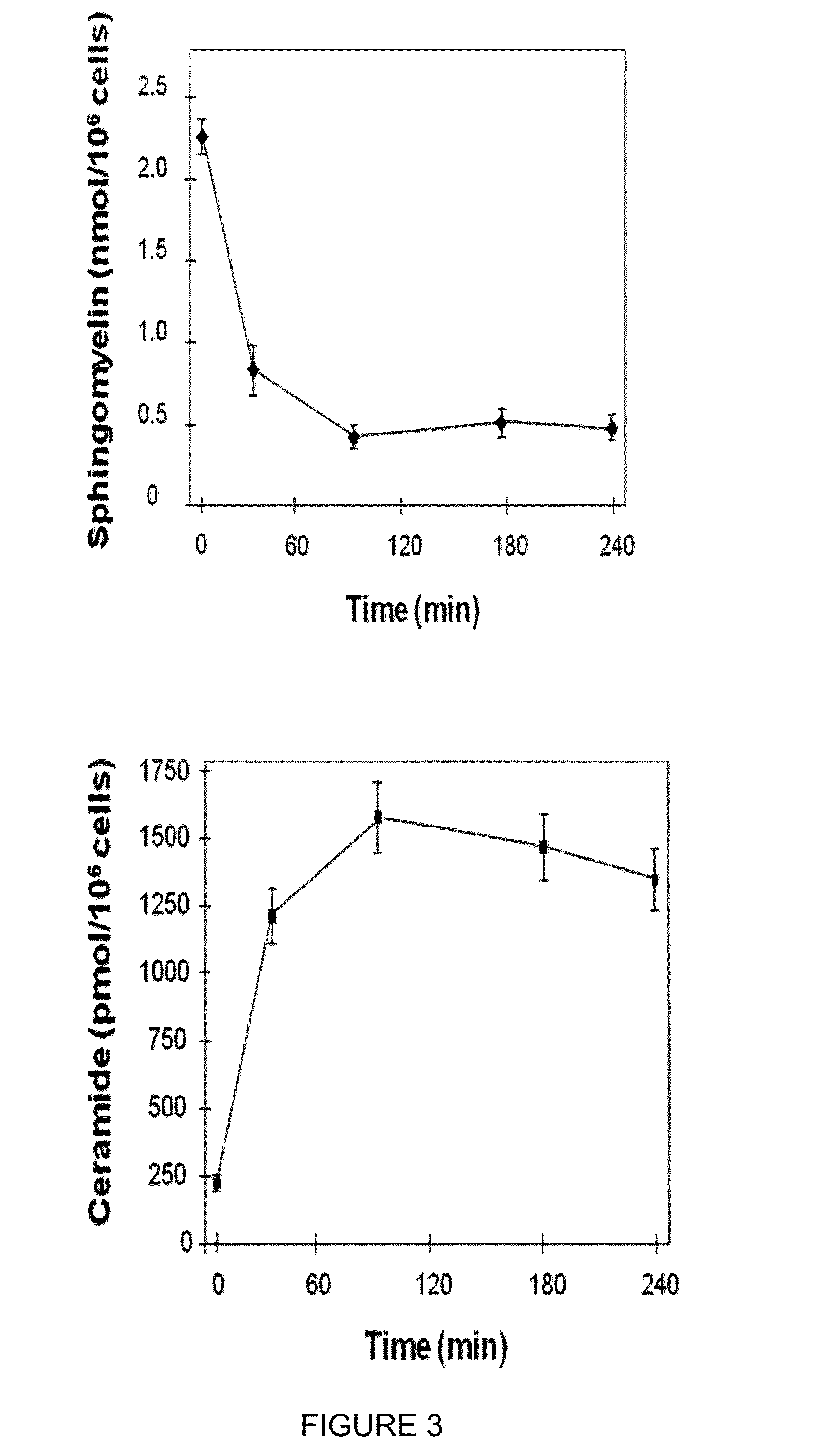Ceramide reversal of multi-drug resistance
- Summary
- Abstract
- Description
- Claims
- Application Information
AI Technical Summary
Benefits of technology
Problems solved by technology
Method used
Image
Examples
Embodiment Construction
[0035]All patents, applications, publications and other references cited herein are hereby incorporated by reference in their entirety into the present application.
[0036]Presuming that competitive inhibition of drug efflux would chemosensitize, cinical trials to reverse the P-glycoprotein (Pgp)-mediated multi-drug (MDR) phenotype have almost always utilized competitive inhibitors of P-gp transporter function, and have largely failed. It is now known that even if drug efflux were prevented, unless strategies were adopted to reverse the trafficking defect, drug would still not reach intended nuclear targets.
[0037]The present disclosure identifies a previously unrecognized multi-step sphingolipid-regulated vesicular transport system that when dysregulated plays a fundamental role in chemoresistance.
[0038]The present invention is based on the observation that a specific ceramide species, C16:0 ceramide, delivered by nano-liposome, reverses this defect, permitting rapid translocation of ...
PUM
| Property | Measurement | Unit |
|---|---|---|
| Fraction | aaaaa | aaaaa |
| Fraction | aaaaa | aaaaa |
| Fraction | aaaaa | aaaaa |
Abstract
Description
Claims
Application Information
 Login to View More
Login to View More - R&D
- Intellectual Property
- Life Sciences
- Materials
- Tech Scout
- Unparalleled Data Quality
- Higher Quality Content
- 60% Fewer Hallucinations
Browse by: Latest US Patents, China's latest patents, Technical Efficacy Thesaurus, Application Domain, Technology Topic, Popular Technical Reports.
© 2025 PatSnap. All rights reserved.Legal|Privacy policy|Modern Slavery Act Transparency Statement|Sitemap|About US| Contact US: help@patsnap.com



